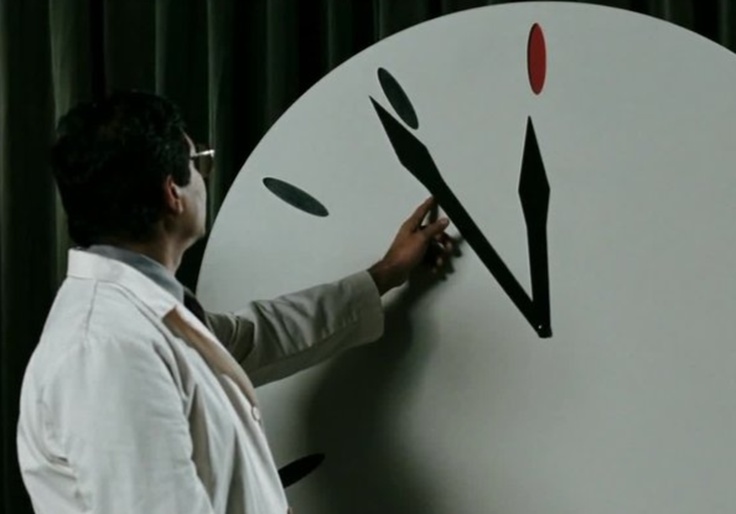The Bulletin of the Atomic Scientists will not move the time on the infamous "Doomsday Clock" closer to midnight despite a hot war in Europe involving a nuclear power, raising questions about the practices of an institution several legacy media outlets refer to as scientific.
When asked by the Washington Free Beacon whether the clock would move forward after citing criteria the organization used in the past, such as armed conflict involving countries with nuclear weapons, a spokesman referred to a March 7 statement from the group saying the time would remain unchanged. Subsequent questions about the organization's methodology went unanswered.
The decision not to change the clock comes after Russian president Vladimir Putin put his nuclear arsenal on "high alert," and NATO mobilized its response force for the first time since its inception. In contrast, the clock moved three times toward midnight under former president Donald Trump, with the organization citing his failure to address, in addition to nuclear weapons, climate change and "fake news."
Created in the aftermath of World War II, the "Doomsday Clock" remains a fixation by many journalists over its supposed prediction of when humanity will end. Both the New York Times and the Washington Post track every single one of its movements and place their coverage in the respective papers' science sections, despite the clock not having any relation to the scientific method whatsoever.
The organization's director, Rachel Bronson, is not a scientist and previously taught at Northwestern University's business school as an adjunct professor. The original founders of the Bulletin of the Atomic Scientists included Albert Einstein and other scientists who worked on the Manhattan Project.
The clock's most recent change came in January 2020, one year before Biden was inaugurated—marking the official time at 100 seconds to midnight—the latest in the history of the clock. It has stayed there for the past three years. In a statement at the time, the group cited the end of the Iran nuclear deal, the "continued corruption of the information ecosphere on which democracy and public decision making depend," and Trump's decision to withdraw the United States from the Paris climate change agreement, among other things, as reasons that compelled the organization to believe humanity is closer to extinction than at any time in history.
For comparison, during the Cuban Missile Crisis in 1962, when the United States and Soviet Union nearly engaged in a nuclear war, the Doomsday Clock stood at seven minutes to midnight. The last time the clock turned back was under former president Barack Obama in 2010, with the group celebrating his work on lowering carbon emissions.
Outlets such as the Washington Post have not questioned the group's movements of the clock. A 2017 article from the outlet was titled "The Doomsday Clock just advanced, 'thanks to Trump': It's now just 2 ½ minutes to 'midnight,'" despite no one in the story being quoted as saying "thanks to Trump." Another story from the Associated Press titled "Scientists move Doomsday Clock 30 seconds to midnight" featured an image of Thomas Pickering, who is not a scientist and serves on the board of the Iranian lobbying group National Iranian American Council, at the announcement.
